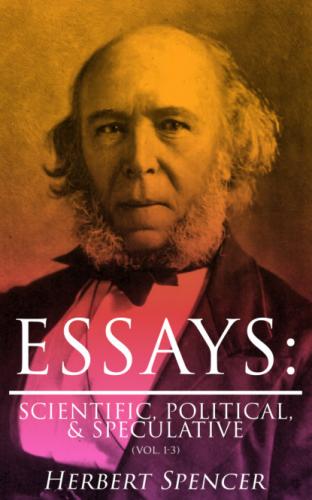Thus far in comparing the governmental organization of the body-politic with that of an individual body, we have considered only the respective co-ordinating centres. We have yet to consider the channels through which these co-ordinating centres receive information and convey commands. In the simplest societies, as in the simplest organisms, there is no "internuncial apparatus," as Hunter styled the nervous system. Consequently, impressions can be but slowly propagated from unit to unit throughout the whole mass. The same progress, however, which, in animal-organization, shows itself in the establishment of ganglia or directive centres, shows itself also in the establishment of nerve-threads, through which the ganglia receive and convey impressions and so control remote organs. And in societies the like eventually takes place. After a long period during which the directive centres communicate with various parts of the society through other means, there at last comes into existence an "internuncial apparatus," analogous to that found in individual bodies. The comparison of telegraph-wires to nerves is familiar to all. It applies, however, to an extent not commonly supposed. Thus, throughout the vertebrate sub-kingdom, the great nerve-bundles diverge from the vertebrate axis side by side with the great arteries; and similarly, our groups of telegraph-wires are carried along the sides of our railways. The most striking parallelism, however, remains. Into each great bundle of nerves, as it leaves the axis of the body along with an artery, there enters a branch of the sympathetic nerve; which branch, accompanying the artery throughout its ramifications, has the function of regulating its diameter and otherwise controlling the flow of blood through it according to local requirements. Analogously, in the group of telegraph-wires running alongside each railway, there is a wire for the purpose of regulating the traffic—for retarding or expediting the flow of passengers and commodities, as the local conditions demand. Probably, when our now rudimentary telegraph-system is fully developed, other analogies will be traceable.
Such, then, is a general outline of the evidence which justifies the comparison of societies to living organisms. That they gradually increase in mass; that they become little by little more complex; that at the same time their parts grow more mutually dependent; and that they continue to live and grow as wholes, while successive generations of their units appear and disappear; are broad peculiarities which bodies-politic display in common with all living bodies; and in which they and living bodies differ from everything else. And on carrying out the comparison in detail, we find that these major analogies involve many minor analogies, far closer than might have been expected. Others might be added. We had hoped to say something respecting the different types of social organization, and something also on social metamorphoses; but we have reached our assigned limits.
FOOTNOTE:
[28] It may be well to warn the reader against an error fallen into by one who criticised this essay on its first publication—the error of supposing that the analogy here intended to be drawn, is a specific analogy between the organization of society in England, and the human organization. As said at the outset, no such specific analogy exists. The above parallel is one between the most-developed systems of governmental organization, individual and social; and the vertebrate type is instanced merely as exhibiting this most-developed system. If any specific comparison were made, which it cannot rationally be, it would be made with some much lower vertebrate form than the human.
THE ORIGIN OF ANIMAL WORSHIP.
[First published in The Fortnightly Review for May, 1870.]
Mr. McLennan's recent essays on the Worship of Animals and Plants have done much to elucidate a very obscure subject. By pursuing in this case, as before in another case, the truly scientific method of comparing the phenomena presented by existing uncivilized races with those which the traditions of civilized races present, he has rendered both of them more comprehensible than they were before.
It seems to me, however, that Mr. McLennan gives but an indefinite answer to the essential question—How did the worship of animals and plants arise? Indeed, in his concluding paper, he expressly leaves this problem unsolved; saying that his "is not an hypothesis explanatory of the origin of Totemism, be it remembered, but an hypothesis explanatory of the animal and plant worship of the ancient nations." So that we have still to ask—Why have savage tribes so generally taken animals and plants and other things as totems? What can have induced this tribe to ascribe special sacredness to one creature, and that tribe to another? And if to these questions the reply is, that each tribe considers itself to be descended from the object of its reverence, then there presses for answer the further question—How came so strange a notion into existence? If this notion occurred in one case only, we might set it down to some whim of thought or some illusive occurrence. But appealing, as it does, with multitudinous variations among so many uncivilized races in different parts of the world, and having left numerous marks in the superstitions of extinct civilized races, we cannot assume any special or exceptional cause. Moreover, the general cause, whatever it may be, must be such as does not negative an aboriginal intelligence like in nature to our own. After studying the grotesque beliefs of savages, we are apt to suppose that their reason is not as our reason. But this supposition is inadmissible. Given the amount of knowledge which primitive men possess, and given the imperfect verbal symbols used by them in speech and thought, and the conclusions they habitually reach will be those that are relatively the most rational. This must be our postulate; and, setting out with this postulate, we have to ask how primitive men came so generally, if not universally, to believe themselves the progeny of animals or plants or inanimate bodies. There is, I believe, a satisfactory answer.
The proposition with which Mr. McLennan sets out,
